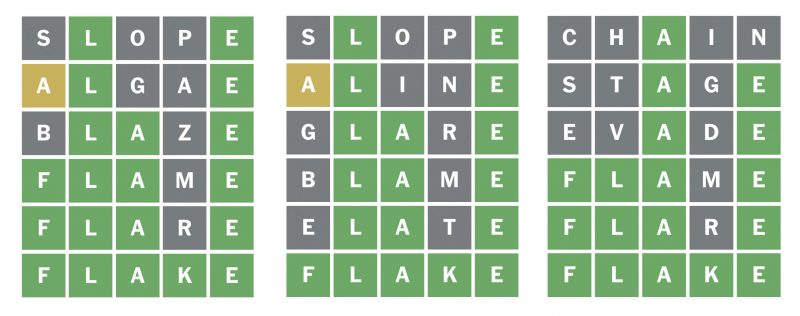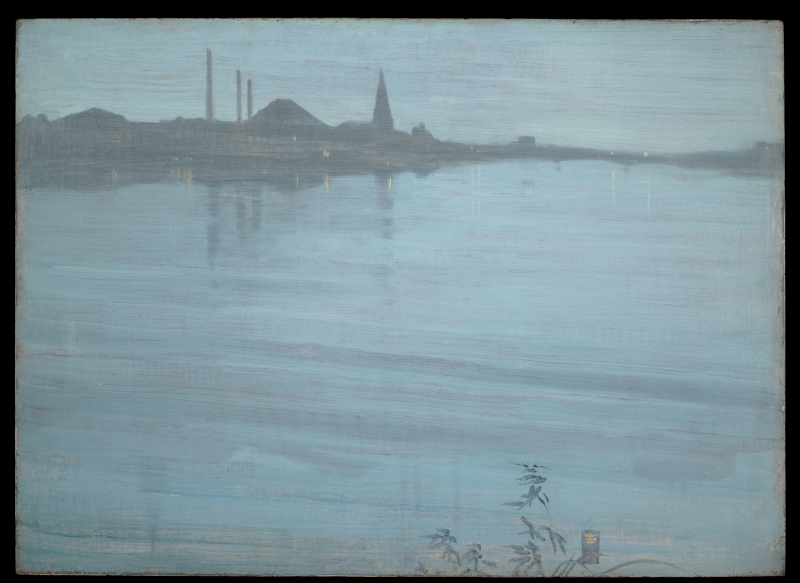Every morning, my husband, cousin, and I play Wordle and share screen shots. It’s a gentle competition, and we laugh at our odd guesses — Aline? But it’s interesting how we arrive at the correct word via different paths, demonstrating that the same “prompt” leads to wide-ranging results. Below are three games from the same day recently where none of us did well.

Even starting with the same first word, the path through to the solution is widely different. It’s similar to writing. Obviously, Wordle has it backwards — we all end on the same word if we solve the puzzle, it’s how we get there that’s different. For story ideas, it’s about the path forward from the original prompt. I have a story ideas folder that I regularly contribute to and shuffle as I look for ideas that might that fit a narrative I’m currently working on. I would like to give you a small example of one.
The Changing Painting
A woman regularly stops by a fine art museum on her way home, the Tate Gallery in London. She visits the same halls most nights on the way home; it helps her relax and switch gears from stresses at work. So she is very familiar with the paintings on the walls. She likes one particular water scape: “Nocturne in Blue and Silver” by the American artist James McNeill Whistler.

Each time the woman looks at the painting, she notices something different — a reflection she hadn’t seen before, a glare, a shadow, etc. One night, she realizes that it’s not possible for her to be surprised by so many new details — she is very familiar with the painting and yet she sees something novel each time. She makes a point to study one particular section of the painting extra carefully, memorizing everything she discovers in the brush strokes. (And no, she can’t take photos — not permitted by the museum. But even if she could, the photos would change, too.) The woman is so focused on the painting that she dreams about it and rushes to the museum as soon as her shift at work is over. She searches for each brush stroke she identified the night before; but while some are there, others are missing and there are new ones that she never noticed. How can that be? She is now obsessed. She goes back over and over again, and each time there are new bits and missing parts to the painting. The woman thinks she must be losing her mind. It impacts all aspects of her life. The more focused attention she pays to the painting, the more it seems to transform.
***
So this can be a story about many things — madness, magic, anxiety, deception. The story that I would end up with based on this prompt would be very different from the one that someone else writes. I am interested in shifting realities — by focusing on the painting with such intensity, the woman manages to switch her reality stream and surfs into another parallel universe each time she spots differences in the paintings. Others would create something completely different. But the idea by itself, this is not enough to make a good story. A good story is a collection of many such “story ideas”. A woman in question might have recently undergone a divorce or suffered some other family misfortune. She might have been a witness to a crime or poised to make a difficult life choice. Or perhaps she is an inspiring artist who is losing her eyesight. Or she might might be a fine art forger or discovered a way of using artificial intelligence to generate providence for stollen art. Or perhaps she had a love an illicit affair with Whistler in another life and is now somehow getting lost in the memories of her prior life. Each additional idea can turn the original prompt into a whole other direction of creative exploration.
If you feel inspired, please consider the above prompt and write back. Did “The Changing Painting” spark any ideas? Let me know. There is a large diversity of possible story line and would be thrilled to share yours in my next newsletter. (Please note that in the early years of this blog, my students regularly contributed posts. As I stopped teaching, the content here is mostly my thoughts and musings.)
For additional inspiration, take a look at a project my company created and ran in the early years of the web, 1996. It was a hypertext entertainment/education site featuring the collaborations of writers from across the internet. The Company Therapist was a place to develop interesting characters and stories and share them with the world. As a creative writing exercise, it gave all participants a set of starting conditions and a prompt: a large tech company in San Francisco hires an in-house psychiatrist as a perk to help its employees cope with the stresses of work and other mental crisis. The writers were invited to create characters and write the therapy session dialog between their character and the psychiatrist. The setup gave enough freedom to create virtually any type of narrative while providing a structure to scaffold the task. Multiple streams by different authors gave birth to many original and unexpected narratives. This project is what truly taught me how to write and features some of my earliest publicly-available creative fiction. The Company Therapist won awards (including the Net Magazine’s “Entertainment Site of the Year”) and is still available for reading at TheTherapist.com.
And here is this month’s novel giveaway:
I hope you find many enjoyable things to read!

